What is PencilCry Ransomware
PencilCry Ransomware is a file-encrypting malware, known as ransomware in short. You You likely never came across it before, and to find out what it does might be particularly shocking. Ransomware uses powerful encryption algorithms for file encryption, and once they’re locked, your access to them will be prevented. Because ransomware could mean permanent file loss, this type of infection is very dangerous to have. 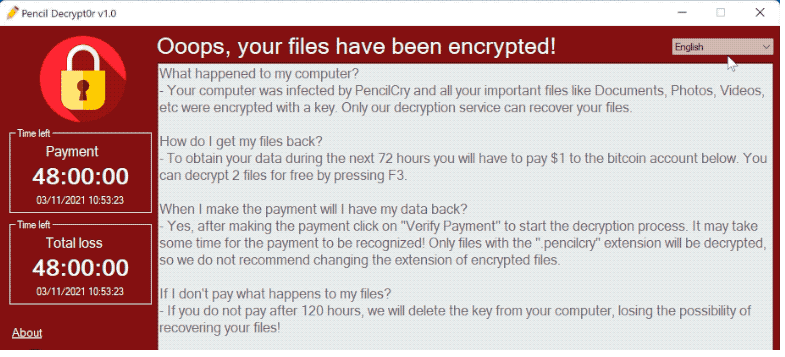
Cyber crooks will give you the option of decrypting files by paying the ransom, but that option is not recommended for a few reasons. Giving into the requests will not necessarily guarantee that your data will be restored, so there’s a possibility that you could just be spending your money on nothing. There’s nothing preventing crooks from just taking your money, and not providing a decryptor. That money would also go into future malicious software projects. It is already supposed that file encrypting malware costs $5 billion in loss to various businesses in 2017, and that’s merely an estimation. Crooks are lured in by easy money, and the more victims comply with the requests, the more attractive ransomware becomes to those kinds of people. Consider buying backup with that money instead because you might end up in a situation where you face file loss again. You could then just erase PencilCry Ransomware and restore data. Data encrypting malware distribution methods may be not known to you, and we will explain the most common ways in the below paragraphs.
Text presented in this message:
English:
Pencil Decrypt0r v1.0
Ooops, your files have been encrypted!
Time left
Payment
48:00:00
03/11/2021 10:53:23Time left
Total loss
48:00:00
03/11/2021 10:53:23What happened to my computer?
– Your computer was infected by PencilCry and all your important files like Documents, Photos, Videos, etc were encrypted with a key. Only our decryption service can recover your files.How do I get my files back?
– To obtain your data during the next 72 hours you will have to pay $1 to the bitcoin account below. You can decrypt 2 files for free by pressing F3.When I make the payment will I have my data back?
– Yes, after making the payment click on “Verify Payment” to start the decryption process. It may take some time for the payment to be recognized! Only files with the “.pencilcry” extension will be decrypted, so we do not recommend changing the extension of encrypted files.If I don’t pay what happens to my files?
– If you do not pay after 120 hours, we will delete the key from your computer, losing the possibility of recovering your files!
PencilCry Ransomware distribution ways
You may generally run into ransomware attached to emails as an attachment or on suspicious download websites. A lot of ransomware rely on people carelessly opening email attachments and do not have to use more elaborate methods. It could also possible that a more elaborate method was used for infection, as some ransomware do use them. Hackers don’t need to do much, just write a simple email that less careful people could fall for, add the contaminated file to the email and send it to potential victims, who might think the sender is someone legitimate. Money related problems are a frequent topic in those emails because people tend to take them seriously and are more inclined to engage in. Criminals like to pretend to be from Amazon and alert you that strange activity was observed in your account or some type of purchase was made. When you are dealing with emails, there are certain signs to look out for if you want to guard your device.
Text presented on this wallpaper:
Ooops, your files are encrypted!
Please find the “Pencil Decrypt0r.exe” software on your desktop, run it and follow the instructions to get your files back!
If you cannot see the “Pencil Decrypt0r.exe” software, try restarting your computer.
If you still can’t find it, make sure your anti-virus hasn’t removed or quarantined it.Thanks
TTVirus
First of all, if you aren’t familiar with the sender, investigate them before you open the file attached. You’ll still have to investigate the email address, even if you know the sender. Grammar mistakes are also a sign that the email might not be what you think. Take note of how the sender addresses you, if it is a sender with whom you’ve had business before, they’ll always greet you by your name, instead of a universal Customer or Member. It is also possible for data encoding malware to use not updated programs on your computer to enter. All software have weak spots but when they are found, they’re regularly fixed by software makes so that malware cannot use it to enter a system. Nevertheless, not everyone is quick to update their programs, as may be seen from the spread of WannaCry ransomware. It’s very crucial that you frequently update your software because if a weak spot is severe enough, Serious vulnerabilities could be used by malicious software so it is essential that all your programs are patched. You could also opt to to install patches automatically.
What can you do about your PencilCry Ransomware locked files
Your data will be encoded by ransomware soon after it infects your device. Even if what happened wasn’t clear initially, it’ll become pretty obvious something is wrong when your files cannot be accessed. Files that have been affected will have an extension added to them, which can help users figure out the file encoding malware’s name. It ought to be mentioned that, file restoring might not be possible if the file encrypting malicious program used a strong encryption algorithm. If you’re still confused about what’s going on, the ransom notification should clear everything up. You’ll be suggested a decryption software in exchange for a certain amount of money. The note should clearly explain how much the decryption software costs but if that is not the case, it will give you a way to contact the criminals to set up a price. As we have already mentioned, we do not recommend paying for a decryption tool, for reasons we have already discussed. Only think about paying when you have attempted everything else. It is also quite likely that you have simply forgotten that you have backed up your files. There’s also some probability that a free decryption tool has been released. We ought to mention that in certain cases malware researchers are capable of decrypting a data encoding malware, which means you might find a decryption program for free. Consider that before you even think about giving into the demands. It would be wiser to purchase backup with some of that money. If your most essential files are kept somewhere, you just terminate PencilCry Ransomware virus and then proceed to file recovery. In the future, avoid file encoding malware as much as possible by becoming aware of its spread methods. Stick to safe download sources, be cautious of email attachments you open, and keep your programs up-to-date.
Ways to remove PencilCry Ransomware virus
If you wish to entirely get rid of the ransomware, you’ll have to get ransomware. If you have little experience with computers, unintentional damage might be caused to your device when attempting to fix PencilCry Ransomware by hand. Therefore, pick the automatic way. These types of tools are developed with the intention of detecting or even blocking these types of threats. Find which malware removal utility best suits what you need, install it and permit it to perform a scan of your computer to locate the infection. However, the program won’t be able to decrypt data, so do not be surprised that your files remain as they were, encoded. When your system is free from the threat, begin to regularly back up your files.
Offers
Download Removal Toolto scan for PencilCry RansomwareUse our recommended removal tool to scan for PencilCry Ransomware. Trial version of provides detection of computer threats like PencilCry Ransomware and assists in its removal for FREE. You can delete detected registry entries, files and processes yourself or purchase a full version.
More information about SpyWarrior and Uninstall Instructions. Please review SpyWarrior EULA and Privacy Policy. SpyWarrior scanner is free. If it detects a malware, purchase its full version to remove it.

WiperSoft Review Details WiperSoft (www.wipersoft.com) is a security tool that provides real-time security from potential threats. Nowadays, many users tend to download free software from the Intern ...
Download|more


Is MacKeeper a virus? MacKeeper is not a virus, nor is it a scam. While there are various opinions about the program on the Internet, a lot of the people who so notoriously hate the program have neve ...
Download|more


While the creators of MalwareBytes anti-malware have not been in this business for long time, they make up for it with their enthusiastic approach. Statistic from such websites like CNET shows that th ...
Download|more
Quick Menu
Step 1. Delete PencilCry Ransomware using Safe Mode with Networking.
Remove PencilCry Ransomware from Windows 7/Windows Vista/Windows XP
- Click on Start and select Shutdown.
- Choose Restart and click OK.

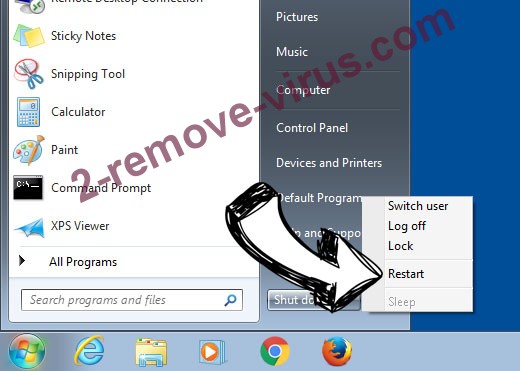
- Start tapping F8 when your PC starts loading.
- Under Advanced Boot Options, choose Safe Mode with Networking.

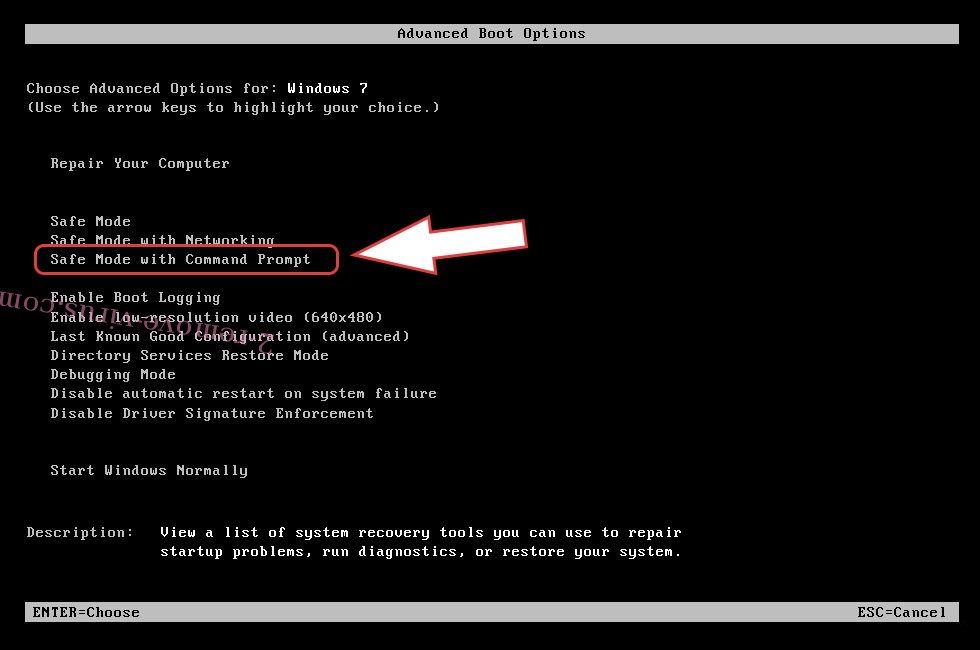
- Open your browser and download the anti-malware utility.
- Use the utility to remove PencilCry Ransomware
Remove PencilCry Ransomware from Windows 8/Windows 10
- On the Windows login screen, press the Power button.
- Tap and hold Shift and select Restart.

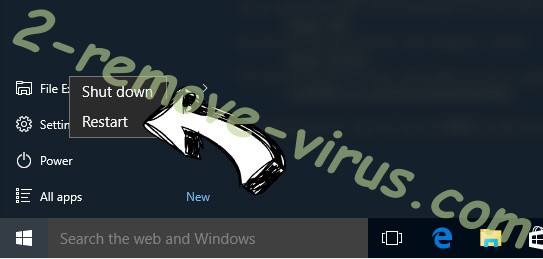
- Go to Troubleshoot → Advanced options → Start Settings.
- Choose Enable Safe Mode or Safe Mode with Networking under Startup Settings.

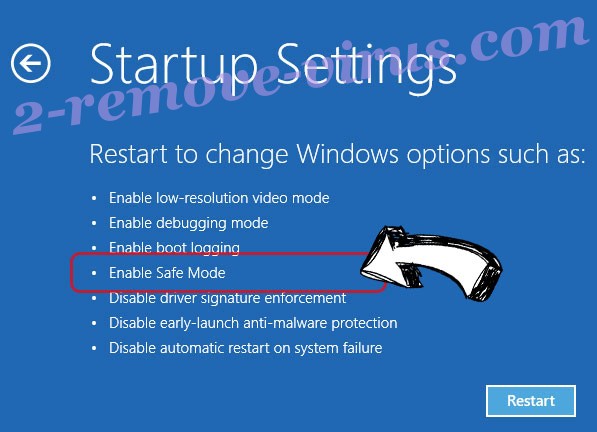
- Click Restart.
- Open your web browser and download the malware remover.
- Use the software to delete PencilCry Ransomware
Step 2. Restore Your Files using System Restore
Delete PencilCry Ransomware from Windows 7/Windows Vista/Windows XP
- Click Start and choose Shutdown.
- Select Restart and OK


- When your PC starts loading, press F8 repeatedly to open Advanced Boot Options
- Choose Command Prompt from the list.

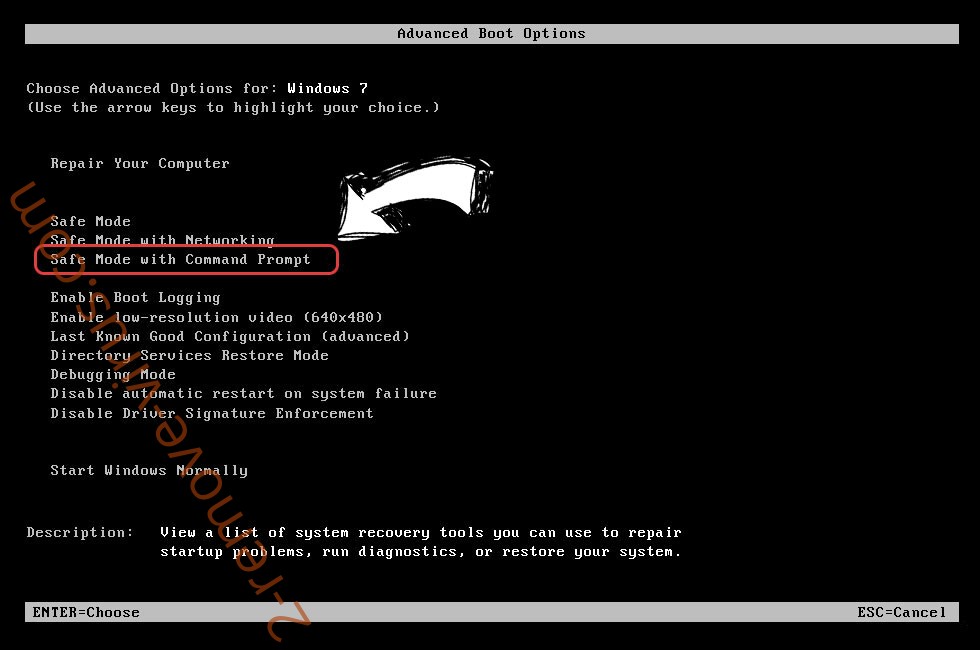
- Type in cd restore and tap Enter.

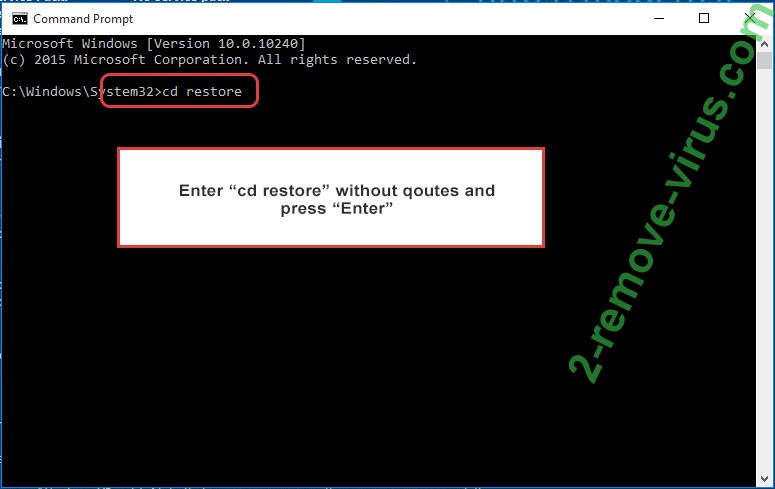
- Type in rstrui.exe and press Enter.

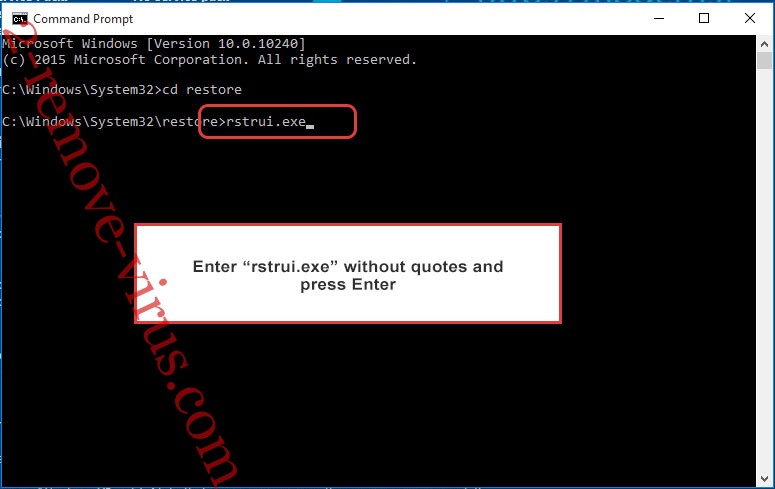
- Click Next in the new window and select the restore point prior to the infection.

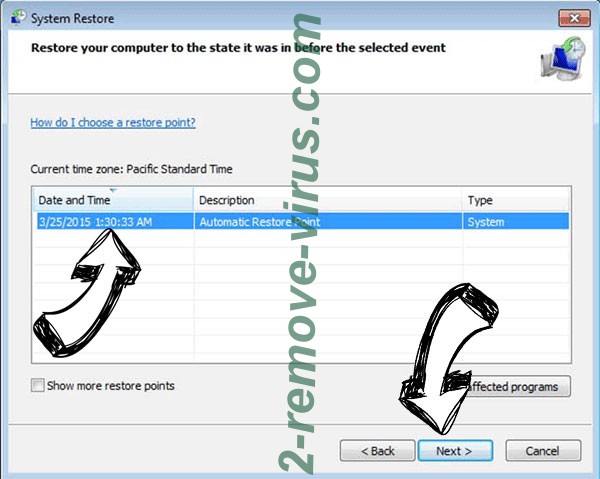
- Click Next again and click Yes to begin the system restore.

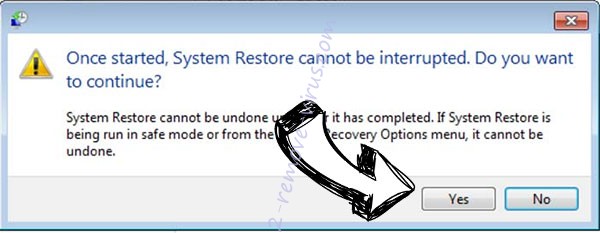
Delete PencilCry Ransomware from Windows 8/Windows 10
- Click the Power button on the Windows login screen.
- Press and hold Shift and click Restart.


- Choose Troubleshoot and go to Advanced options.
- Select Command Prompt and click Restart.

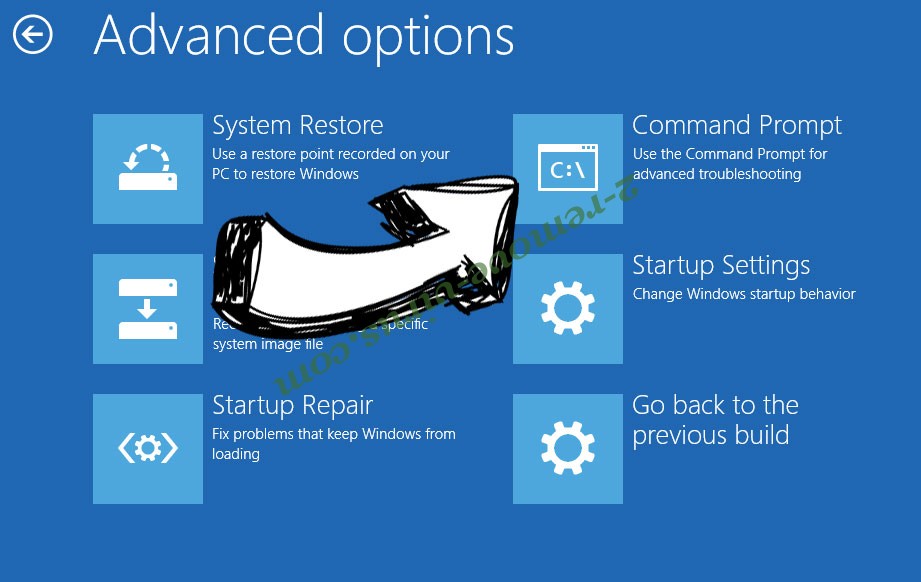
- In Command Prompt, input cd restore and tap Enter.


- Type in rstrui.exe and tap Enter again.


- Click Next in the new System Restore window.

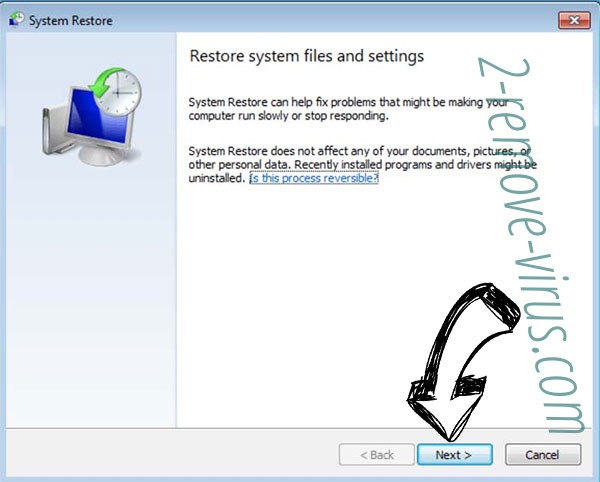
- Choose the restore point prior to the infection.


- Click Next and then click Yes to restore your system.


Site Disclaimer
2-remove-virus.com is not sponsored, owned, affiliated, or linked to malware developers or distributors that are referenced in this article. The article does not promote or endorse any type of malware. We aim at providing useful information that will help computer users to detect and eliminate the unwanted malicious programs from their computers. This can be done manually by following the instructions presented in the article or automatically by implementing the suggested anti-malware tools.
The article is only meant to be used for educational purposes. If you follow the instructions given in the article, you agree to be contracted by the disclaimer. We do not guarantee that the artcile will present you with a solution that removes the malign threats completely. Malware changes constantly, which is why, in some cases, it may be difficult to clean the computer fully by using only the manual removal instructions.
